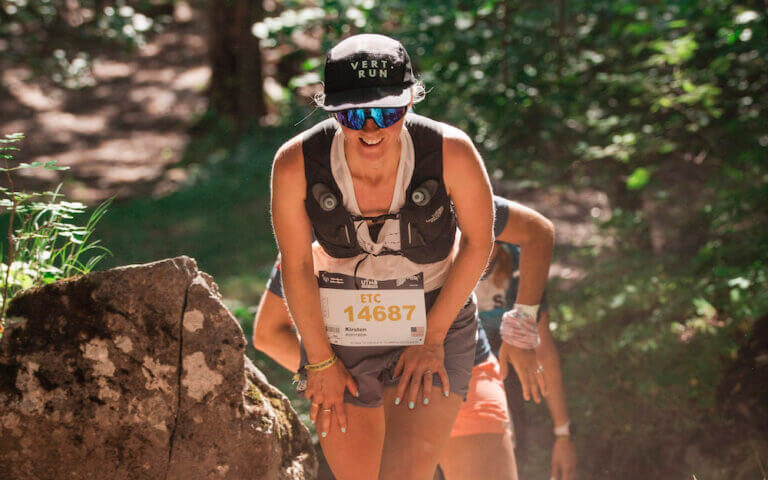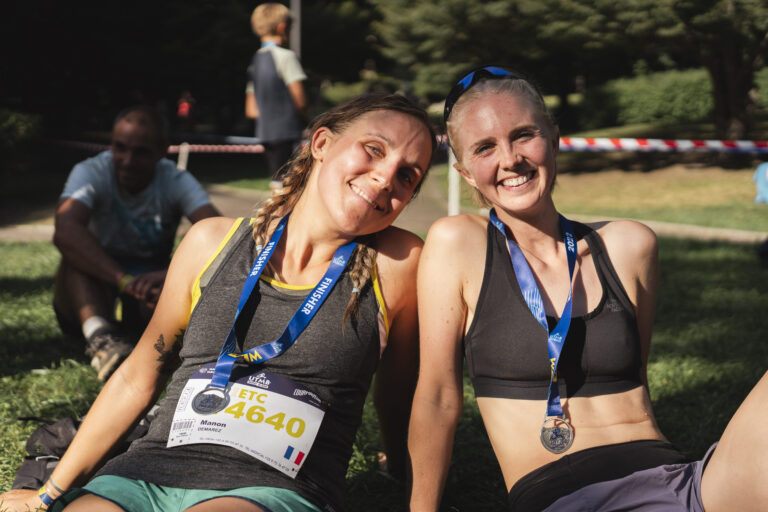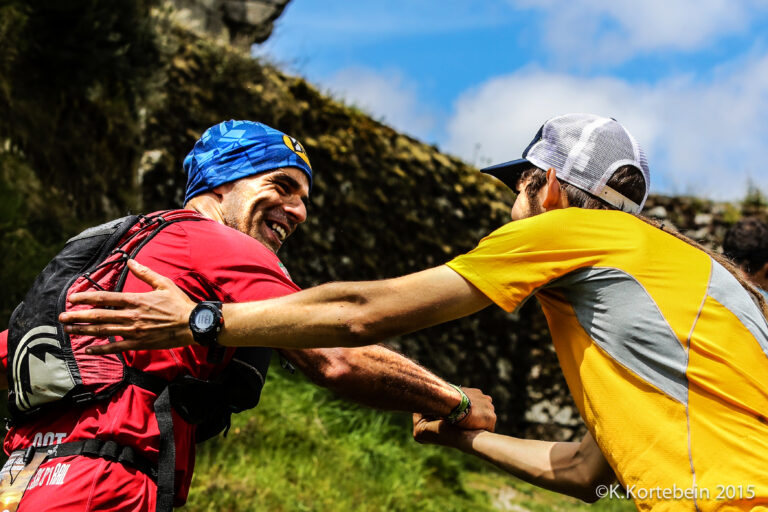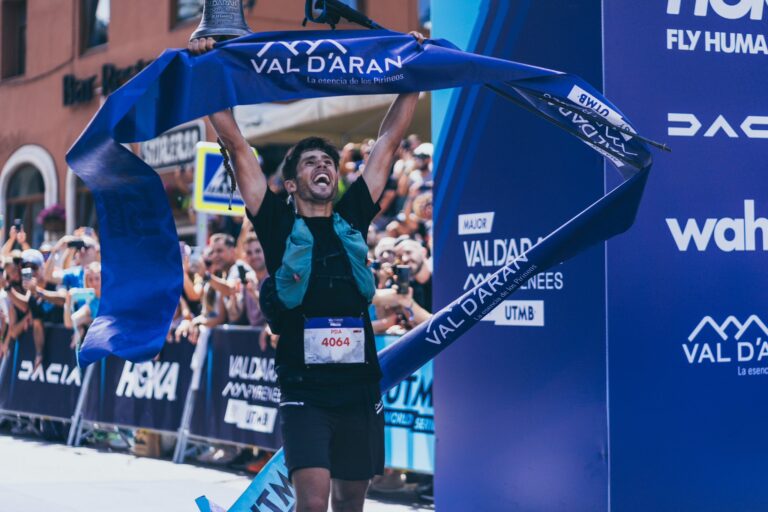This article was written by Vert.run coach Francesco Puppi–who’s also a professional trail runner for Nike, and one of the fastest trail runners out there.
In this article, he’ll walk you through his personal experience with choosing the best trail running watch, and what matters (and doesn’t) for using a GPS watch for trail running.
Hi, I’m Francesco Puppi, a coach for Vert.run and professional trail runner for Nike. Today we’re going to walk through to use a GPS watch for trail running (and what data is really important to pay attention to) in my personal experience as a professional trail runner.
This morning I went for a run and, not having any running partners, I decided to put on my headphones and listen to a good podcast.
Podcasts are an incredible source of knowledge and inspiration (have you ever listened to OUR very own podcast, Running Long?!), and for today’s run I decided to go with an episode of the Rich Roll podcast with pro triathletes Gustav Iden and Kristian Blummenfelt, both from Norway, Ironman Kona 2022 Champion and 2021 Olympic Triathlon Champion respectively.
One thing that struck me was how their training is so scientific and data driven, though the numbers that they are really paying attention to when they are running are only just a few specific pieces of data.
For example, during a race they only use a very simple GPS watch face showing heart rate, pace, distance and total time. No glucose monitor, no power/watts, no other fancy numbers or data fields.
I then thought about how this could be the start of a reflection on how we currently make use of our GPS watches as trail runners (which is a sport that is quite different from triathlons.)
During my athletic career I have used GPS watch models from all the main brands available on the market: Garmin, Polar, Suunto and now COROS, which is the one I am mostly happy with. Besides the accuracy with COROS watches, the possibility to customize its data fields and analytics make it a very useful tech tool for training.
It is true that since I first got a GPS watch almost 10 years ago, technology has made huge improvements and I am very confident that each brand is currently offering very reliable, high quality, and cost effective products…even though I think COROS is the company that stands out the most (plus, they sponsor the two absolute GOATS of road and trail running: Eliud Kipchoge and Kilian Jornet).
My COROS Apex 46mm is really simple and straightforward to use. Two simple reasons why I like it are that it is not touchscreen (something that is somewhat annoying if, for example, you need to change screens while running) and that it only has two buttons.
Want to take your trail running training to the next level? Discover why trail runners around the world love training with Vert.run. Get a high-quality, personalized training program and weekly feedback from your personal Vert.run coach (like Francesco, who’s writing this article!) Click here to see all our plans.
How to choose a GPS watch for running
Let’s start off with the basics: what’s the best way to choose a GPS watch for trail running?
There are many good articles (independent or sponsored articles, make sure you always know the source!) on how to choose a GPS watch for running, and depending on what you’re looking for, there’s a wide array of options available on the market.
Here I will try to recap what, according to me, are the most important features of a GPS watch for trail running that I use almost on a daily basis:
- Accuracy: there are five major satellite systems: GPS, Glonass, Galileo, QZSS and BeiDou. The first three at least are a must for any trail running GPS watch.
- Barometric altimeter
- Multisport and possibility to record any activity that you practice (trail running, cycling, hiking, gym, yoga, etc.)
- Track mode
- Satellite navigation (even without topo maps)
- Excellent battery life (without draining the battery)
- Usability (possibility to build workouts, upload routes, download workouts, how easy/quick it is to acquire the satellites signal.)
What I would also consider:
- Weight (i.e. how heavy the watch is)
- Music 😉
- Touchscreen, depending on your personal preference
- Design and fit, band and screen material
- Night mode
- Extra features and App compatibility
- Price
What I would NOT consider:
- Anything that distracts you from the actual training and metrics that matter
- Fitness/health tracking besides very simple data (example: sleep time, number of steps)
- Wrist heart rate
- Running power
What numbers do I look at when I go for a run?
Depending on which watch you choose, your setup will look slightly different–but just to give you an idea, here’s what I see when I’m using my own watch.
For me, the main watch face only displays three fields: total time, total distance and average pace.
Then, the second one shows lap time, lap distance and lap average pace (a lap being either a split that I take during the run, or the auto lap that is usually preset on 1km).
The third screen includes the elevation data, with altitude, total ascent and descent, plus total distance on the bottom.
Finally, the fourth screen displays heart rate, total time and time of the day—info that I find always useful to have handy!
But what do I really pay attention to while running?
First of all, something that you won’t find on any GPS tracker or tech tool: feelings.
The mere RPE, or “Rate of Perceived Exertion.” What is this? Basically, the RPE (or “rate of perceived exertion”) is how I feel while running: this is why every Vert.run training plan is based on RPE, to quantify the effort and give you an idea of how hard or easy you should be running!
We must keep in mind that technology should be an aid, a tool to get a confirmation of what our body is already telling us.
That’s why it’s so key to learn to listen to our bodies. Technology is only as useful as how it complements our ability to listen to our body.
In reality, I do look at my GPS watch while running: most of the time to check whether my feelings correspond to the actual data, and other times to check the time, distance, elevation etc during my workouts.
Navigation and how to build routes with a GPS watch
The second reason why I think GPS watches have made a difference in the way I train is because of the current available navigation features.
Building and uploading a track, or downloading a route and using it with my GPS watch, has never been easier and has allowed me to explore amazing playgrounds without the fear of getting lost or necessarily having to run an out-and-back course in a place I don’t know (or even worse, running laps around a block!)
Having the ability to build and upload a custom route is definitely a feature that I would not give up when making the decision about which GPS watch to buy as a trail runner.
I usually build routes with Strava, Koomot, Outdooractive (on a smartphone), and then I save the GPX file and open it with the COROS app, adding it to the routes library and syncing it with my watch.
VO2max: should we really pay attention to this parameter?
Another parameter typically displayed by many GPS models available on the market is VO2max, something that I get a lot of questions about, especially by the more experienced runners that I coach here at Vert.run.
VO2max, or maximal oxygen uptake, is an important number for ultrarunners because our efforts are primarily aerobic–and this metric basically measures the body’s ability to transport and use oxygen while doing an aerobic exercise such as running.
VO2max is somewhat trainable, but it’s hard to expect changes of more than 5-15% during the life of an athlete: the truth is that VO2max is largely fixed and genetically determined, so if you don’t like your own number, blame your parents!
The good news is that we shouldn’t be obsessed with this number, and here’s why.
Want to take your trail running training to the next level? Discover why trail runners around the world love training with Vert.run. Get a high-quality, personalized training program and weekly feedback from your personal Vert.run coach (like Francesco, who’s writing this article!) Click here to see all our plans.
VO2max is an important predictor of our running abilities, but it isn’t the only important performance metric.
Besides VO2max, running economy and percentage of sustainable VO2max–which is what you actually work on in training–are the main factors that dictate performance.
Running economy is largely improved by simply running more, so with time and consistency your running economy will optimize.
Since I started using my COROS Apex two years ago, my VO2max has only fluctuated between 64 and 67 ml/kg/min. How can we realistically expect to determine how fit we are as trail runners based on a number that basically does not change?
For reference, my real VO2max, measured in a sport performance lab with a proper test, is 72 ml/kg/min. COROS’s estimate of my VO2max, based on activity data including heart rate and pace from my runs, is still quite accurate, but not something I rely on for training or knowing how fit I am.
It can be an interesting number to look at, occasionally, but we should definitely not get obsessed with it. There are many examples of athletes with a relatively low VO2max who regularly run faster than people with a really high VO2max, so it’s definitely not going to tell us how we will perform in our next race 😉
How to use the “race predictor” functionality on GPS watches for trail running
Another common field that I’ve seen on most GPS watches is the race predictor for various distances, from 5k up to the marathon.
But how accurate is this? What metrics is it based on?
Let’s start again from my own data. I’m coming from my trail running off-season and I’m nowhere near peak fitness, though I think I’d do decently racing a 10k or half marathon distance. My COROS Apex expects that I can run a 15:34 5k, 32:29 10k, 1h12 half marathon and 2h50 marathon. I could probably run faster for any of those distances (and for reference, my PRs are 14:34, 29:47, 1h04 and 2h16), but where I think the race predictor fails the most is on the marathon.
This is mainly because those predictions are based on and built for road runners, not for athletes who train and compete on the trails. So, again, not knowing exactly how these predictions are calculated, but knowing that they are not really reliable for trail athletes, why would we be influenced by them?
Want to take your trail running training to the next level? Discover why trail runners around the world love training with Vert.run. Get a high-quality, personalized training program and weekly feedback from your personal Vert.run coach (like Francesco, who’s writing this article!) Click here to see all our plans.












